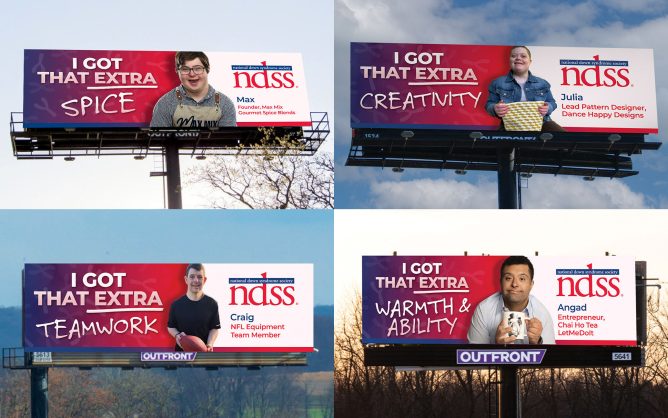Building a disability inclusive workplace isn’t just about hiring people with disabilities. To foster a workplace that’s truly inclusive of people with disabilities, employers should ensure every worker has access to equal opportunities to learn, succeed, advance, and receive appropriate compensation. Thoughtful, evidence-based long-term strategies, systems, and support can create an environment where people with disabilities can succeed. An inclusive workplace should align with and help achieve the organization’s objectives.
In our current economy, it will take innovation to make this a reality. Here are 5 steps employers can take to create a disability inclusive workplace.
Institute Company-wide Training
While it’s true that training needs to come from the top down, and leadership must value it and be onboard, it’s likely you’ll need to hire a consultant who specializes in this education. Leaders must be trained about the business case for disability inclusion. It’s crucial for management to receive training on fears about hiring people with disabilities and to dispel any stigma attached. Leadership must also know it’s up to them to provide a safe environment for employees to discuss their concerns. Team members at all levels of the company should be engaged and embrace the initiative as well.
Recruit, Hire and Retain the Best
The goal of your recruitment and hiring process is to attract and identify candidates with the right skills and attributes for the roles available. Employers must ensure that all qualified prospective new hires —including those with disabilities— can participate in the process. Finding qualified candidates starts with community outreach and using a mix of different recruitment sources.
Consider:
- Reaching out to local vocational rehabilitation case managers like those at Allsup Employment Services (AES) who can connect you with qualified candidates in your area.
- Contacting area career services and disability resource centers at local universities, community colleges, and technical and vocational schools.
- Sponsoring a charity event to support local organizations, then networking with attendees about employment opportunities.
- Creating internships that can strengthen and reinforce your hiring pipeline.
Support Employees with Disabilities
You must give careful thought to how you’ll support any new hire with a disability. This can begin in the initial stages of the hiring process. When posting job openings, you can state that qualified candidates with disabilities are encouraged to apply and explain how they can request an accommodation.
A solution that is sustainable over time is to create intrinsic support. Managers can partner with HR to collaborate on strategies that support people with disabilities long-term. Here we mean more traditional types of support like technology to assist with job performance.
Communicate Your Disability Inclusion Plan Far and Wide
Be sure your entire staff is receiving consistent messages about your disability inclusion initiative and its importance. An inclusive workplace thrives when employees at all levels of the organization are aware and engaged. Your messaging should connect the inclusion plan with your organizational goals.
Here are some recommendations to get the word out:
- Presentations from leadership – these are crucial to having all employees understand the plan and get behind it.
- Social media, company intranet, email, and workplace signage or posters.
- Success stories – share these as they happen.
Once your internal team is onboard and active, social media is a great way to extend your plan and its achievements to an external audience.
Measure Your Return on Investment
Creating an inclusive workplace takes significant time and resources. So, you need your initiative to pay off to justify its continuation.
It can be difficult to measure things like improved morale or a change in corporate culture, but these factors are measurable:
- Lower recruiting costs – It’s expensive to post your openings on traditional hiring sites. Local disability organizations may post them at no cost to your organization.
- Improved retention – Many companies find that people with disabilities stay on the job longer. A study of a Chicago Light House customer care center found that, on average, employees with vision loss or other disabilities and veterans had a retention rate of 1.7 years vs. 0.9 years for employees without disabilities or non-veterans.
- Lower absenteeism – Another study reported that people with disabilities have fewer absences in general and fewer scheduled absences than their co-workers.
Building a disability inclusive workforce is worth the time and resources it takes and can yield incredible results for your organization when correctly implemented. It also moves toward a goal we hold dear at AES – closing the employment gap between those with disabilities and those without. People with disabilities are a motivated, dependable and skilled workforce ready and willing to help you achieve your organizational goals. It’s time to return them to work.
Source: Forbes




